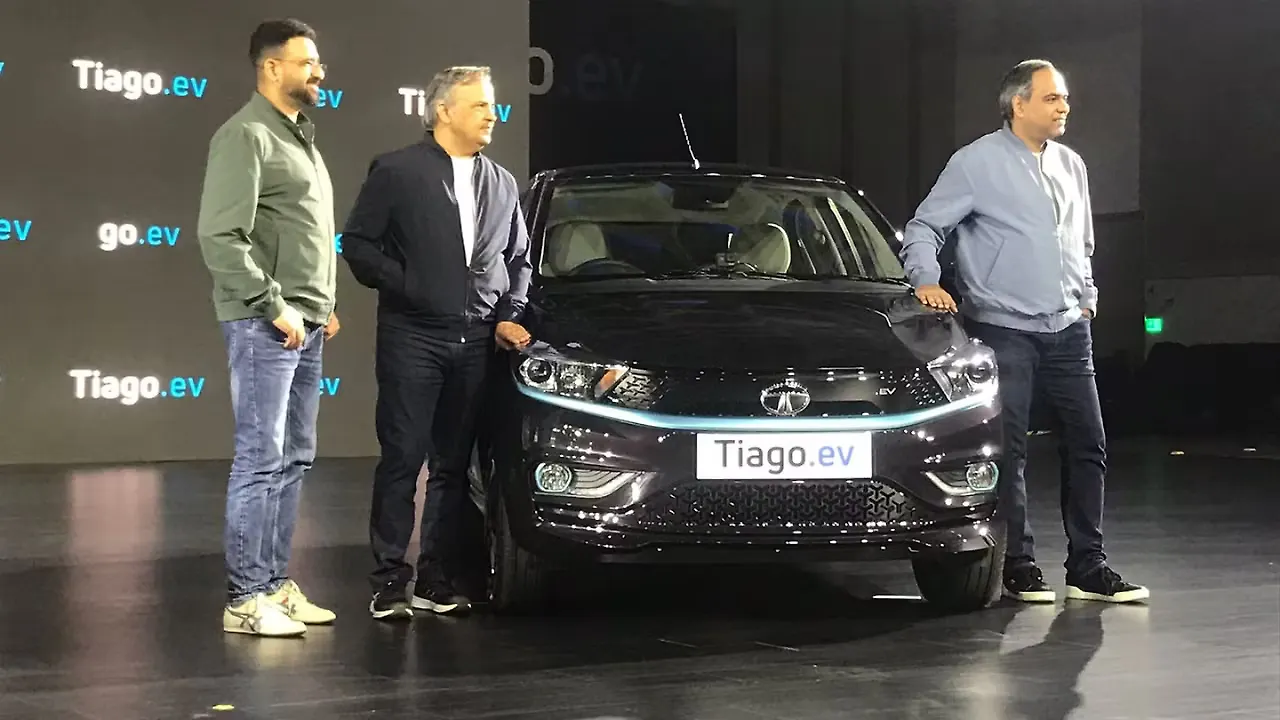
For someone who joined Tata Motors as a graduate engineer in 1993, Anand Kulkarni has over the years with the company contributed to all passenger car products. He has worked in multiple functions like engineering and product development, and has extensive experience in product conceptualisation, advanced product creation, programme management and delivery. An automobile engineer from the University of Pune, Kulkarni’s core strengths lie in the areas of thermal management, vehicle dynamics, ergonomics, attribute management and multi-parameter optimisations. An alumnus of the SP Jain Institute of Management & Research, Kulkarni leads the team responsible for development of all Passenger Electric Vehicles at Tata Motors.
Could you throw light on what went into the making of the Tiago EV?
With the Tiago EV we have focused on multiple areas to ensure that it does not constrain itself to being an ICE vehicle replaced with EV parts. Hundreds of engineers have put in a couple of years of development to get around the challenges we faced.
The primary challenge was not really in terms of packaging the battery, but ensuring a good weight balance on the car, so that the stability and dynamic were not compromised.
Consequently, the Tiago EV sees a change in the coil spring, damping and also the way that the tyres are set up. The vehicle also has a slightly different braking and steering system compared to its ICE sibling.
The second challenge was ensuring minimum room for protection at the rear for the batteries so that the impact is not passed on in a rear end crash situation. With the batteries, the heft of the vehicle also increases which demands enhancing the front end structure. The idea is to ensure that in a crash, the impact is not transferred to the cabin.
Beyond these changes, the features had to be tailored to suit the needs of the target audience. The Tiago EV now has an addition in the form of the Zconnect telematic app which also had to be optimised vis-a-vis the Nexon EV.
It was not a challenge in the sense of trying to develop something from scratch but in implementing it for a new and different kind of vehicle while evaluating customer expectations.
What are the common parts shared by the Tiago and Tigor electric duo?
The number of common components on the Tier-1 level are less and more for Tier-2 and 3.
The cells are the same but battery packs are different. While the engine control unit and compressors are absolutely the same, the cradle and mounting arrangement in the front are different. Although the motor capacity and the type remain the same for both vehicles, the actual motor is different.
The tyres are also better in terms of low resistance in the Tiago but Tata plans to bring these updates along with the connected app to the Tigor as well. One of the main reasons for the change in components is due to the fact the Tiago has a smaller footprint than Tigor.

What challenges did you face working on the X0 range of EVs?
The X0 architecture is an upgrade to the ICE X1 platform to meet EV requirements. The key challenge was to work within the architecture which is already available and ensure that things were done in a certain manner.
Working on the same manufacturing facilities, which have been tooled up in a certain way, must be considered to create solutions. By the end of the day, I do not think there is any compromise in terms of using an ICE platform from the ability to deliver a meaningful EV. There is no shortfall while solutions have to be found out in a different way from what we have done. The end state is not compromised.
How does Tata manage with one vehicle- multiple powertrain on a single assembly line?
To ensure the highest level of production efficiency, packaging of the batteries had to be done in a way that it can be assembled directly on the line and there is no need for it to be assembled separately. But then this creates an additional challenge with the weight balance.
With a normal car, there is no weight in the rear but with the battery — when the car is going on a ramp — it creates a tilting effect which again is a safety issue. In response to this, we have developed new ways of fixing and anchoring the body onto the line so that we do not have an accident or a problem.
We have also ensured that the Takt time (the rate needed to complete a product) remains the same for all powertrain options. An ICE model has multiple components assembled on the line while in EVs, every component comes together and gets strapped onto the body.
Besides CNG and EVs, what other alternative fuel options is Tata looking at for its PV range?
Hydrogen as a technology is not new; it has been around and we have our own experiments and assessments going on. But hydrogen applies more to commercial vehicles and is feasible for long distance runs.
In the case of PVs, we can work on hydrogen but it will not meet your requirements. For small format vehicles, electric is by far the best option. The next three years will see us bring out six more EV products in the PV range.
Also Read
Tata Motors Leverages Market Research For EV Upgrades